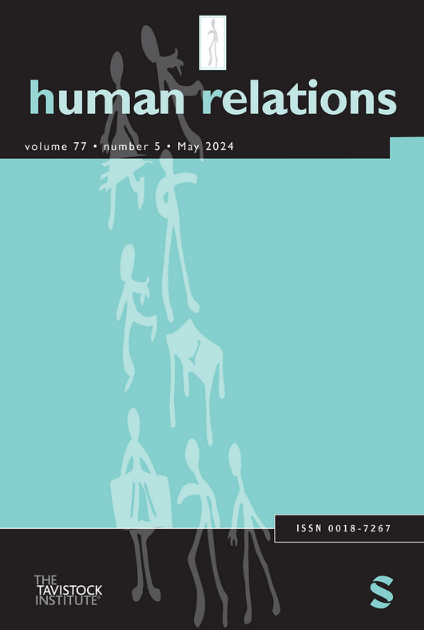变化的皱纹?在CEO接班过程中高管年龄概况的再现
IF 5.4
2区 管理学
Q1 MANAGEMENT
引用次数: 0
摘要
我们研究了首席执行官(CEO)继任过程中的高管年龄再现情况。与一般劳动力年龄更加多样化的趋势相反,高管的年龄似乎更加单一,而且在任命时年龄越来越大。尽管首席执行官继任的频率越来越高,但这并不代表高层人口结构发生了变化。结合上层建筑理论、同质社会再生产理论和高管继任研究的观点,我们研究了年龄同质现象,认为这是一种未被充分研究的应对措施,可以缓解 CEO 继任事件带来的一些干扰。利用首席执行官继任作为变革的理论背景和实证识别策略,我们构建了 2000 年至 2020 年期间 297 家标准普尔 500 指数公司的 391 个继任样本,并应用分层线性建模规范来检验假设。我们发现,离任首席执行官和现任高层管理团队(TMT)的年龄特征往往会在各继任事件中重现,这一观点得到了普遍支持。然而,当考虑到新任首席执行官的出身时,我们发现了一些耐人寻味的模式。值得注意的是,在外部首席执行官继任者的领导下,其中一些普遍趋势可能会得到加强--这与外部首席执行官任命引发动荡的通常预期相反。我们将讨论这对理论和实践的影响。本文章由计算机程序翻译,如有差异,请以英文原文为准。
Wrinkle of change? The reproduction of executive age profiles across CEO succession episodes
We examine the reproduction of executive age profiles across chief executive officer (CEO) succession episodes. Counter to the trend of the general workforce becoming more age-diverse, executives appear to have become more age homogenous and increasingly older at appointment. This is despite increasing frequency of CEO succession episodes, which represent opportunities for demographic change at the top. Combining insights from upper echelons theory, homosocial reproduction theory, and executive succession research, we examine age homophily as an underexamined response to appease some of the disruptiveness surrounding CEO succession episodes. Exploiting CEO succession as a theoretical context for change and an empirical identification strategy, we construct a sample of 391 successions in 297 Standard and Poor’s 500 index companies from 2000 to 2020 and apply a hierarchical linear modeling specification to test hypotheses. We find general support for the notion that age profiles of departing CEOs and incumbent top management teams (TMTs) tend to be reproduced across succession episodes. However, some intriguing patterns emerge when accounting for the origin of the incoming CEO. Notably, some of these general tendencies may be reinforced under outsider CEO successors—counter to the usual expectation for upheaval prompted by outside CEO appointments. We discuss implications for theory and practice.
求助全文
通过发布文献求助,成功后即可免费获取论文全文。
去求助
来源期刊

Human Relations
Multiple-
CiteScore
12.60
自引率
7.00%
发文量
82
期刊介绍:
Human Relations is an international peer reviewed journal, which publishes the highest quality original research to advance our understanding of social relationships at and around work through theoretical development and empirical investigation. Scope Human Relations seeks high quality research papers that extend our knowledge of social relationships at work and organizational forms, practices and processes that affect the nature, structure and conditions of work and work organizations. Human Relations welcomes manuscripts that seek to cross disciplinary boundaries in order to develop new perspectives and insights into social relationships and relationships between people and organizations. Human Relations encourages strong empirical contributions that develop and extend theory as well as more conceptual papers that integrate, critique and expand existing theory. Human Relations welcomes critical reviews and essays: - Critical reviews advance a field through new theory, new methods, a novel synthesis of extant evidence, or a combination of two or three of these elements. Reviews that identify new research questions and that make links between management and organizations and the wider social sciences are particularly welcome. Surveys or overviews of a field are unlikely to meet these criteria. - Critical essays address contemporary scholarly issues and debates within the journal''s scope. They are more controversial than conventional papers or reviews, and can be shorter. They argue a point of view, but must meet standards of academic rigour. Anyone with an idea for a critical essay is particularly encouraged to discuss it at an early stage with the Editor-in-Chief. Human Relations encourages research that relates social theory to social practice and translates knowledge about human relations into prospects for social action and policy-making that aims to improve working lives.
 求助内容:
求助内容: 应助结果提醒方式:
应助结果提醒方式:


